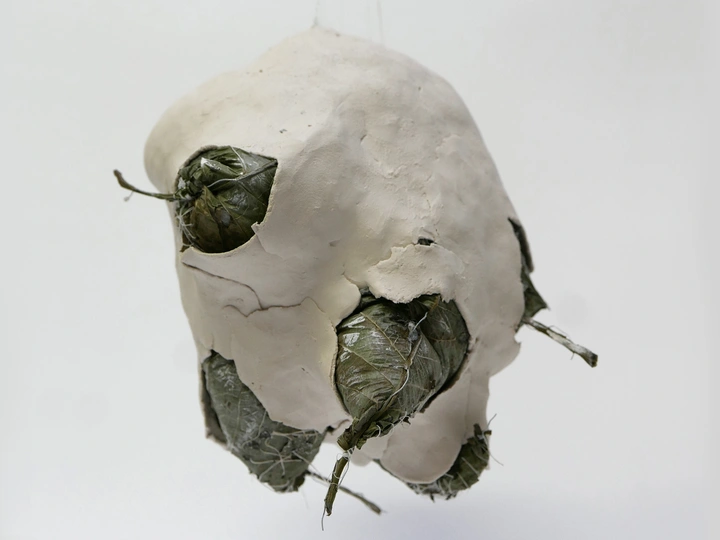The Word for World is Forest

I was born in 1978 in Copenhagen and here I also live and works today. I educated as an architect in 2007 from the Royal Academy of Art in Copenhagen, and in 2009 I establish my own practice in the field between art and architecture.
Organic form is my main focus, and I am interested in the psychological impact and creation of relationship that organic form and space can provide and in the construction of organic structures.
I have developed a construction technique which is inspired by the craft of the tailor where two-dimensional pieces are sewn into three-dimensional objects. And pattern-making is just as essential for my technique as it is for the tailor. Because this construction technique is based on the strength of the curve it provide a very strong construction with minimum use of materials.
During the years I have built many projects with this technique and I have also explored thoughts about architecture in drawing and models which have been exhibited.
In the solo exhibition ‘The Word for World is Forest’, artist and architect Simon Hjermind Jensen explored the potential of the plant kingdom in an architectural context. The title is taken from a novel of the same name written by the American author Ursula K. Le Guin. In Le Guin’s science fiction universe, plants and forests have superhuman abilities and hypersensitive properties. Nature is seen as an inexhaustible and rich source of knowledge, inspiration, and sensual experience – as something that can do without us, but which we cannot do without.
For the exhibition at Augustiana Kunsthal, Simon Hjermind Jensen starts from an imaginative approach and unfolds his thoughts on how plants can contribute to our architecture and design. Hjermind Jensen wanted plants to be ‘co-creators’ in the exhibition and therefore plant parts are included in the process of all his works.
In terms of method, Simon Hjermind Jensen’s work hovers between architecture and art that forms shapes, marked by a systematic, yet intuitive approach.
In the exhibition hidden and unique idioms is unfolded for four plants. And each idiom has an associated pattern which is created by the veins in the leaves. These patterns are very similar to the patterns that Hjermind Jensen uses in the construction technique he has developed in previous projects.
Perhaps pattern is essential for plants when they grow. And in that case, pattern can be seen as a kind of algorithm that forms the basis of the way that plants exist and interact with the world. If in the future we can collaborate with plants to produce architectural structures, then perhaps our houses will be living algorithms that create their own material. We must then ensure that they have access to water, nutrition, and sunlight. Such buildings will probably have a similar organic idiom where pattern is the supporting principle.